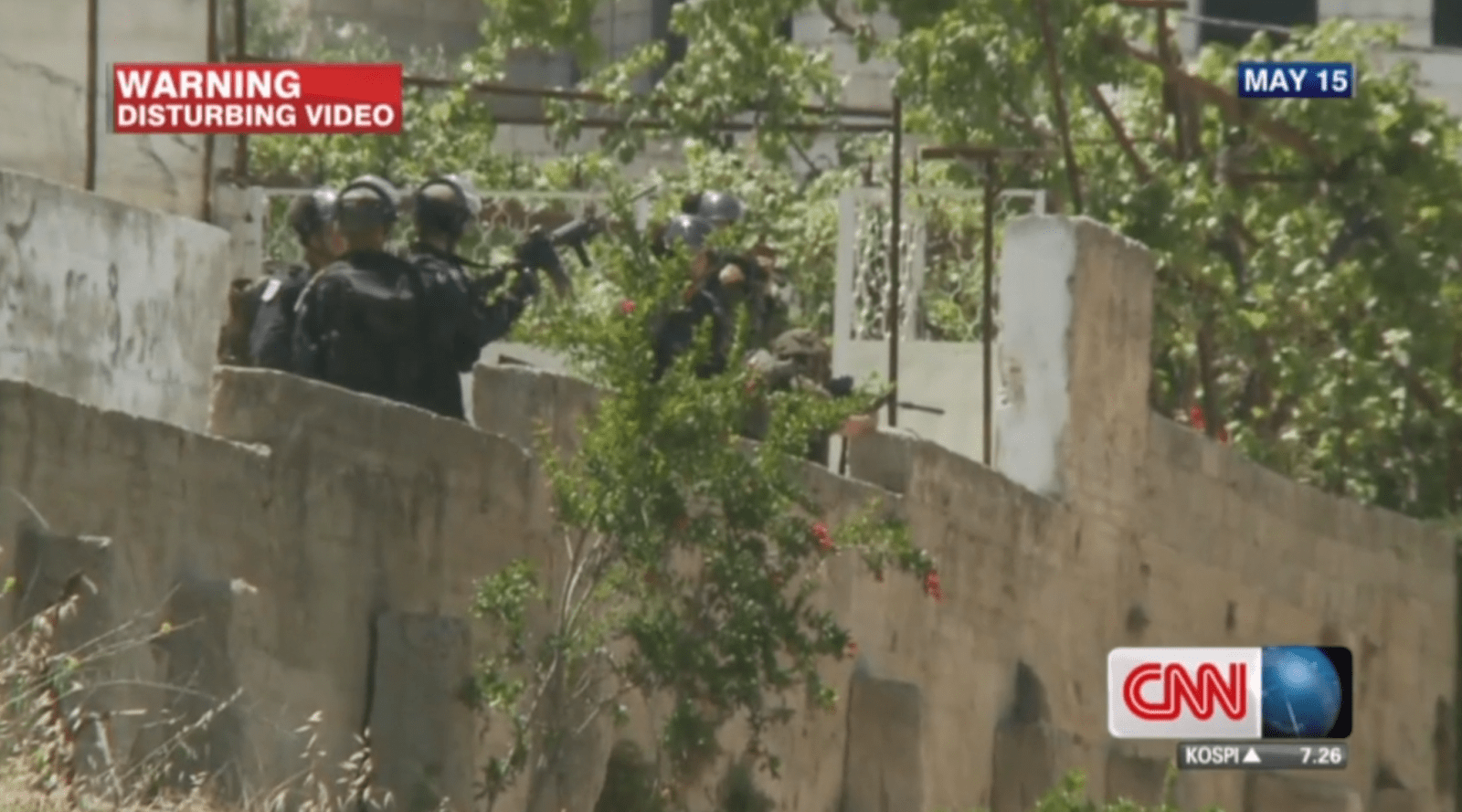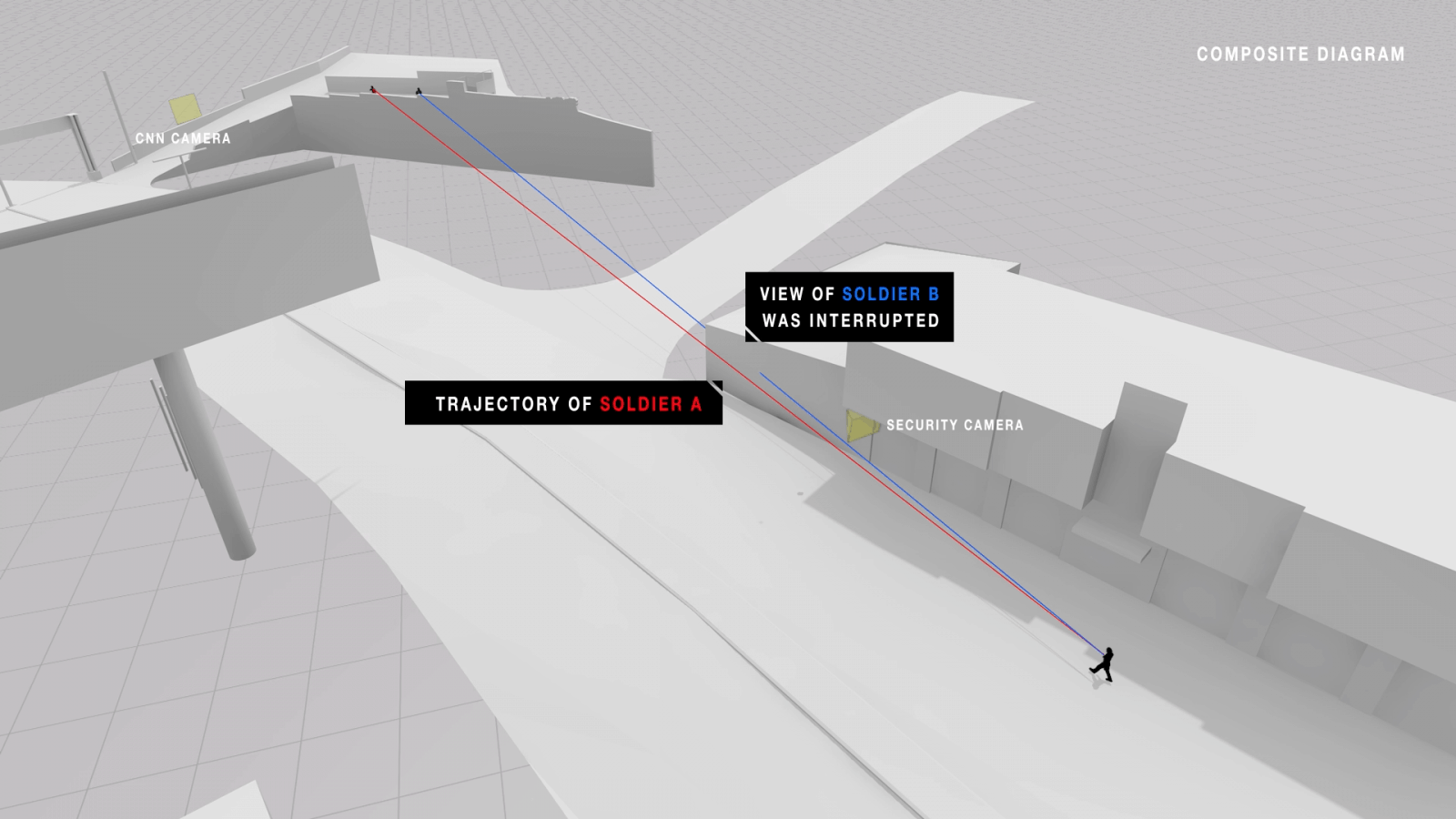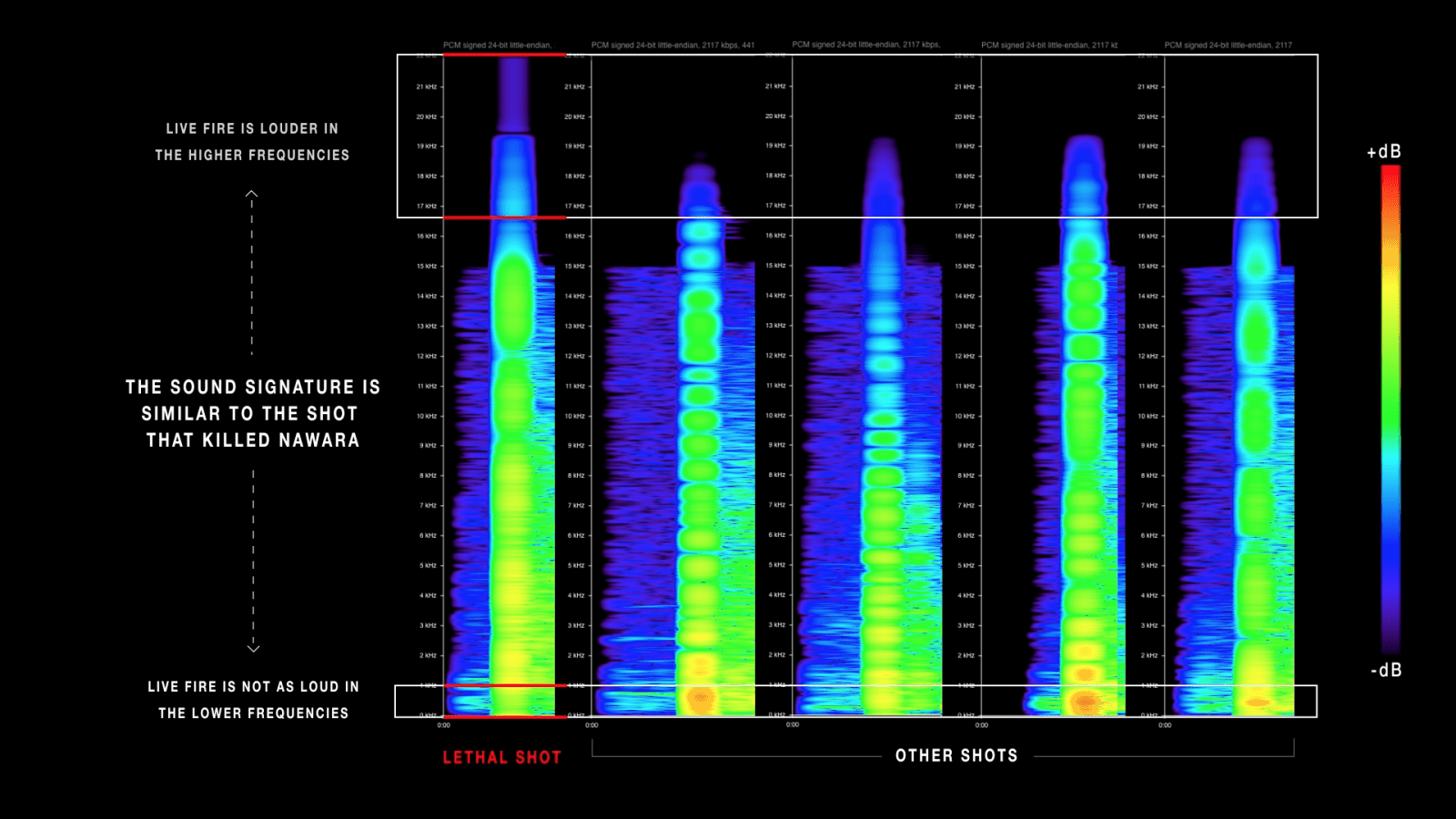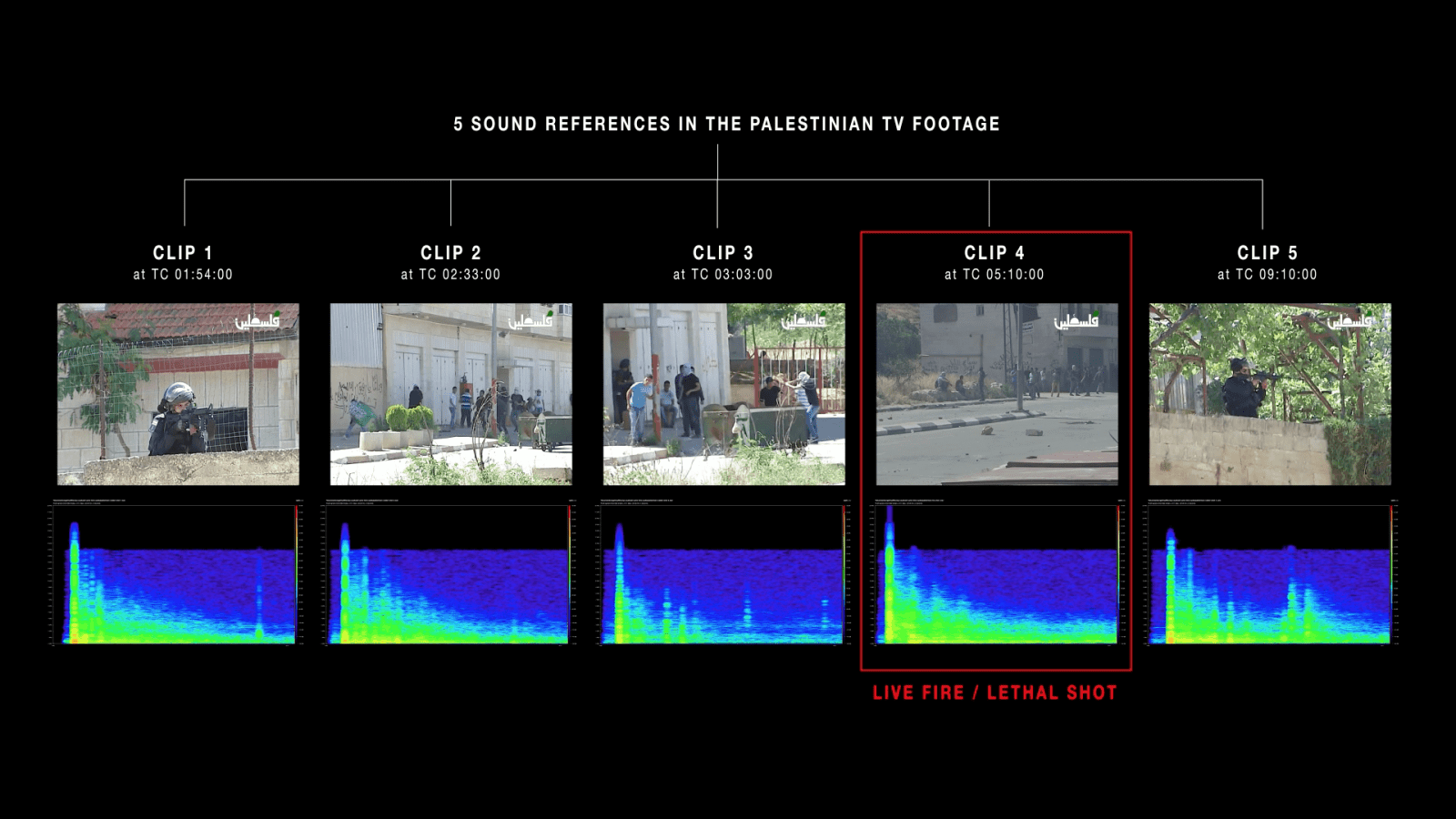Date of Incident
Publication Date
Methodologies
Forums
Exhibitions
- Forensic Justice
- Decolonizing Appearance
- Counter Investigations
- The Architecture of Conflict
- Forensic Architecture: Hacia una Estética Investigativa
- The Other Architect
- In the Vestibule with Forensic Architecture
- Forensic Architecture: Towards an Investigative Aesthetics
- The Other Architect
- Forensis
Every 15 May is marked by protests in the Occupied Palestinian Territories. The date marks the anniversary of the establishment of Israel—an event known to Palestinians as the ‘Nakba’.
After the dispersal of a protest in the town of Beitunia on the morning of 15 May 2014 (the sixty-sixth anniversary of the Nakba) witnesses heard three gunshots, roughly an hour apart.
The first, at around 12:20pm, wounded Muhammad Azzah, fifteen. The second, at 1:45pm, killed Nadeem Nawara, seventeen. The third, at 2:58pm, killed Mohammed Abu Daher, sixteen. All three teenagers were hit along the same patch of pavement, in front of a small carpentry workshop.
Forensic Architecture (FA) investigated the killings of Nadeem Nawara and Mohammad Abu Daher on behalf of the NGO Defend Children International Palestine (DCI), and the parents of the teenagers.
What began as an attempt to identify the perpetrators of a double murder evolved to explore Israel’s mechanisms of denial, and identified a chilling tactic employed by Israeli military police.
By chance, CNN producer Kareem Khadder had captured the shooting of Nawara from a crucial angle. A week after the killing, CNN aired the video. The footage showed a group of Israeli border police, and a single Israeli soldier, aiming their rifles toward where the boys had been shot.
FA brought together images, videos and testimonial evidence within a digital model of the site of the boys’ deaths. As well as CNN’s footage, the event was captured by a CCTV camera outside the carpentry workshop.
Rather than submit them to police investigators, DCI intended to publicly release our findings in response to developments of the media narrative, intervening in the investigative process from the outside.


Nawara was killed by live fire, shot through a rubber-coated steel bullet attachment. Our analysis of footage from CCTV and news coverage demonstrated that the policeman was aware of the fact he was shooting live rounds, and that he subsequently tried to conceal his actions.
Audio analysis later established that the same tactic was used to kill Abu Daher.
On 11 November, Ben Deri, a member of Israel’s border police, was arrested, after a bullet found in Nawara’s bag was found to have been fired from his weapon. On 23 November, Deri was indicted for manslaughter and placed on house arrest. His home became a site of pilgrimage for politicians and celebrities.
Update
 01.01.2017
01.01.2017
Siam Nawara, Nadeem’s father, wrote to FA. ‘The defence [lawyers] and a representative of the Israeli government’, he said, ‘are putting pressure on me to sign a deal’.
This ‘deal’ described an impossible turn of events: Deri would agree to admit to negligence and be convicted of a wrongful killing, for unintentionally firing a live round ‘which accidentally fell into his magazine’. Deri’s plea was ultimately accepted by the prosecution, without Nawara’s consent.
Around the same time, FA released a video investigation into the killing of Mohammad Abu Daher. Abu Daher’s family had not permitted his body to be exhumed, and there was no video footage of the shooting; the sound profiles of the two fatal shots was all that connected the two murders.
Update
 25.04.2018
25.04.2018
Following a trial that lasted almost four years, Ben Deri was sentenced to nine months in prison for negligent manslaughter. Despite overwhelming evidence suggesting that he had intentionally killed Nawara, the prosecution agreed to a plea deal.
It is extremely rare that charges are brought against Israel’s security personnel. The fact that there was a charge at all in this case is largely to the existence of the footage captured by CNN. No such responsibility has been admitted on the part of the state or any of its agents for the death of Abu Daher.
Methodology
Methodology
CNN’s footage captured Israeli personnel firing toward Nawara’s position. the workshop’s CCTV captured the moment that he was hit. To begin our analysis, it was necessary to isolate an event captured in both. We then rewound the footage to observe which of the soldiers had fired their weapon the moment before Nawara was hit.
Within a digital 3D model, we drew lines of sight for two soldiers, and found that only one had a clear view to Nawara’s position at the time he was shot. This was the same individual we had identified as discharging his weapon at the moment that Nawara was struck.
We examined other video footage of soldiers firing M16 rifles, and compared it to the behaviour of the personnel visible in CNN’s footage. When firing live ammunition, an empty cartridge is automatically ejected from the chamber of the rifle; when rubber-coated steel bullets, however, are fired the empty cartridge is not automatically ejected. In light of this information, we were able to demonstrate that the border policeman fired live ammunition.
‘Audio investigator’ Lawrence Abu Hamdan compared the different sounds of gunshots recorded in the video footage and identified the particular acoustic characteristics of live ammunition being fired through a rubber bullet extension.
By comparing the sound signature of Nawara’s shooting to the shooting of Abu Daher, the beginnings of a pattern emerged: both deaths were the result of Israeli security personnel intentionally firing live ammunition through an extension designed to be used to fire ‘non-lethal’ rubber-coated munitions.

